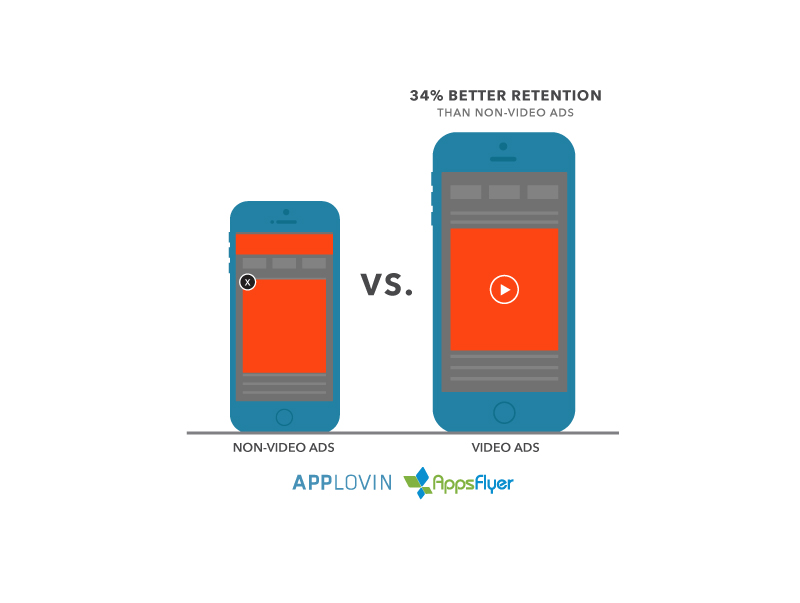With the growth of high-speed mobile broadband comes new opportunities for using different kinds of ads. Video remain as one of the most effective means of advertisement, especially when it comes to retaining user retention for a mobile app. In this year alone, mobile video ad spend has nearly tripled, as they can help app retention by up to 40 percent. A December 2014 Business Insider Intelligence report estimates that mobile video ad revenue will reach up to $4.4 billion by 2018.
A new report, created in a partnership between AppLovin and AppsFlyer, examines data from over one billion devices worldwide to determine the overall effectiveness of mobile video ads.
[a]listdaily speaks to Ran Avrahamy, AppsFlyer’s head of marketing, to get further insight into the report and what it means.
What is it about video ads that make them so effective at creating app retention?
Video ads show a user what an app is truly like way more effectively than any text ad or even any static display ad ever could, so the user has a pretty good sense of what to expect from the app before they install it. If a user gets to watch the app in motion and has the chance to actually see its graphical movements, its gameplay, or whatever its best features are in action, and then they choose to install it, it’s because they’ve already decided that they’re interested in the app and the chances are pretty good they’ll like it once they start using it. With other types of ads, the user is taking a bit more of a leap of faith that the app is something they might like, and once they start using it they might discover that it’s not quite what they thought it would be.
The report mentions that video ads on iOS outperform those on Android by 10 percent in terms of retention. What do you think accounts for the difference?
That’s a great question. One theory is that there are slightly more apps available on Google Play than the App Store (about 1.6 million to 1.5 million, respectively), so Android users have more options to choose from. In addition, iPhone users are a different demographic (younger and more affluent) than Android users and therefore use apps differently. Lastly, the variance of Android devices (some top of the line but others not) means the whole experience of watching videos may be impacted. iPhones are, on average, better devices than the average Android device, whether in relation to performance, sound, video quality, resolution etc. so an iOS user is more likely to experience the full potential of a video ad unit, leading to better engagement and ultimately driving action.
The report also notes that Android apps lose an average of 77 percent of its daily users within three days of install. Do video ads appear to make a significant impact in changing this trend?
Yes. The data in the report looks at retention on Days 1, 7 and 30, as these are the most common milestones measured by mobile marketers. Our data for Android video retention shows a drop of nearly 60 percent by Day 7, which is still far less than the 77 percent drop that occurred as early as Day 3.
What kind of difference in retention did you see between the best performing app that used a video ad compared to the best non-video ad app?
Most apps, especially the top performing ones that are highly savvy, always use a variety of ads video and non video so it’s not really possible to isolate this kind of data. What we can say is that when looking at the top performing Android apps, video ads on Android had a nearly 38 percent higher retention than non-video ads.
Is average retention using video ads especially effective with video game apps?
Yes. It is well known that mobile video is a huge hit among gaming developers as it can best capture game play and cool graphics. So on Android we see a 33 percent higher retention on gaming apps using video ads, while on iOS the gap is even bigger reaching 47 percent.

